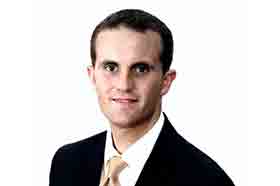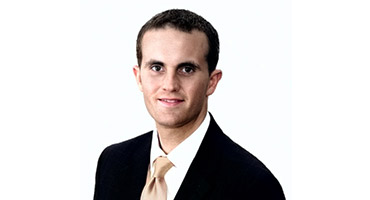Rapid diagnosis and improvements deliver substantial value
Editor’s note: This is one of three stories in a series on how PE firms can build value immediately after an acquisition. In addition to this article on finance modernization, see our stories on optimizing operations and human capital management.
Transforming a private equity portfolio company’s finance function after a transaction is much like renovating a house when you’ve bought a fixer-upper.
In the initial 100 days, you might be able to install new appliances, paint a room in need of a new look, and even replace a furnace that’s not working correctly. However, more complex projects in the overhaul — such as a new addition or a kitchen remodeling — require longer time frames.
During due diligence and the days leading up to the transaction, it’s useful to divide your objectives between the people, processes and systems that can be upgraded quickly and those that will take longer to resolve.
“I’ve seen new portfolio companies borrow an accounting manager from another portfolio company for three months to get everything working right,” said Grant Thornton Transaction Advisory Principal Richard Sittema. “They come in without any accounting policies, without anybody that can do a balance sheet reconciliation. They get that all fixed in the first week.”
Improvements in the finance function that typically are made right away include:
- Shoring up basic accounting and reporting functions and controls, making sure that the appropriate data will be available with the frequency and accuracy expected from all the PE firm’s portfolio companies.
- Adjusting technology so the acquired company can operate effectively on the underlying transactional systems and properly report financial information and KPIs to the new PE buyer.
- Plugging dangerous gaps in cybersecurity protections and other control deficiencies.
- Changes in leadership and personnel.
- Implementing immediate margin-lift opportunities identified during diligence, which can mean cost takeout but also price increases where possible.

“Pre-close, the focus of diligence needs to be on identifying the people, process and technology changes that must be made in the first 100 days.”
Other improvements may take longer.
“It’s not uncommon for a newly acquired business to have significant weaknesses in processes and systems,” Sittema said. “Pre-close, the focus of diligence needs to be on identifying the people, process and technology changes that must be made in the first 100 days. Larger, more significant transformation initiatives can be planned but shouldn’t take priority over the immediate improvements that align with the 100-day plan.”
4 goals for a target’s finance function
A rapid diagnostic analysis can help the PE buyer assess the finance function’s maturity. PE firms often seek a third party to assess a target’s finance capabilities, pinpoint areas of opportunity and obstacles to synergies, identify desired characteristics for integrated finance operations, and describe potential risks and mitigation plans.
The timing of such an analysis can vary depending on when both organizations can comfortably share their information with one another and the third party. Whenever the diagnosis occurs, it is undertaken with the objective of enabling four key goals for the newly updated finance function:
- P&L transparency
- Balance sheet accuracy
- Cash flow visibility
- Value alignment in success criteria, KPIs, budget and incentives
These goals seem simple, but often they’re beyond the sophistication of an acquisition target.

“Now [after an acquisition] the stakes are going to increase quite a bit.”
“If you’re buying a $100 million or $200 million business, they might be just looking at a P&L and saying, ‘We make our payroll, we’re making profits and life is good,'” said Grant Thornton CFO Advisory Principal Mike Hennessey. “Well, now the stakes are going to increase quite a bit.”
Maximizing the value of a PE investment requires optimizing the value that the finance function brings to the organization. Finance should be able to provide insights into P&L and cash flow that can enable efficiencies and the redeployment of available funds into treasury assets or the business.
“I’d like to see folks really understand their cash conversion cycle from payables to tied-up days in inventory to DSO [days sales outstanding],” Hennessey said. “Understanding the combination of those three metrics can help you generate a lot of cash by better managing your accounts payable and inventory and being more diligent on your receivables.”
Meanwhile, finance improvements that lead to a significant reduction in the number of days after close required to produce financial statements can lead to more favorable debt covenants. These changes require strategy, insight, planning and discipline, but ultimately can deliver substantial value.
An effective diagnosis of the company early on can help finance build more effective, scalable processes while identifying gaps that need to be filled with knowledge capital, systems improvements and/or other resources.
Technology: Band-aids are OK
Simplicity often is a key factor when PE leaders are deciding on systems changes that may be necessary in the first 100 days.
PE firms that fully understand the portfolio company’s reporting package can determine during the diligence process what information and data the acquired company’s systems will provide them. If there are gaps in the system, a third party or an IT director at one of the fund’s other portfolio companies can be brought in to make the necessary adjustments as soon as the close is complete.
“If I’m not getting the segment reporting that I need or I’m not getting the profitability data by product, customer and geography that I need from the systems, I have to change that immediately,” Sittema said. “You identify the data that you need to effectively run the business, and if the system can’t give you that, you have to make changes immediately.”
PE leaders generally try to stick to basic systems changes, though, because of compatibility issues. It makes little sense to fund huge ERP system upgrades at a portfolio company that:
- You’re planning to exit in the near term; and
- Already possesses underlying transactional systems that meet the needs of the business.
Start with the data and reporting layers, and perhaps introduce simple automation and efficiencies within the organization that will easily translate to other companies that get added to the platform. But keep in mind that, for example, a services company that’s adding a manufacturing layer might not have manufacturing resource planning capabilities.

“Keeping it simple, allowing each individual company to continue to operate on its own technology and then figuring out the integration layer is certainly a viable strategy.”
“Keeping it simple, allowing each individual company to continue to operate on its own technology and then figuring out the integration layer is certainly a viable strategy,” said Grant Thornton Technology Modernization Partner Tony Dinola.
It’s also important to build value by effectively managing risks. Major control gaps should be addressed immediately. For example, if the portfolio company is running unlicensed server operating systems or transactional applications, management needs to address that problem immediately to reduce the risk of vendor fines that would quickly erode value.
In all but the rarest of transactions, it’s possible within the first 100 days to develop a finance function that manages risks effectively with streamlined processes that enable the collection and analysis of the right data to enable accurate reporting and valuable insights.
More advanced capabilities can be added later but making significant progress within the first few months after an acquisition is one of the biggest keys to delivering a high multiple a few years down the road. Once the organization has been stabilized, additional transformational opportunities can be assessed to expand value, such as adopting cloud technologies, purchasing new technology capabilities and upskilling the team to introduce more innovative ways of working.
Ultimately, if you plan appropriately for the immediate improvements that can be made in the first 100 days and the more substantial renovations that require a longer time frame, you’ll increase your odds of turning your fixer-upper into a castle and delivering on the objectives of your deal.
Contacts:



National Managing Partner, Private Equity,
Grant Thornton Advisors LLC
Greg Westfall is Grant Thornton's national managing partner for Private Equity.
New York, New York
Industries
- Private Equity
Service Experience
- Advisory Services



Partner, Transaction Advisory Services,
IT M&A Advisory
Grant Thornton Advisors LLC
Richard Sittema has more than 15 years of experience in business consulting. He started his career in business analyst roles on large-scale systems integration and IT-related consulting engagements for public, private and not-for-profit organizations.
Cleveland, Ohio
Industries
- Manufacturing, Transportation & Distribution
- Not-for-profit & Higher Education
- Healthcare
Service Experience
- Transaction Advisory
- Technology Modernization
- Risk Advisory



Partner, Business Consulting
Grant Thornton Advisors LLC
Mike Hennessey is a Partner in the Business Consulting practice of Grant Thornton located in Charlotte, NC.
Charlotte, North Carolina
Industries
- Manufacturing, Transportation & Distribution
- Technology, Media & Telecommunications
- Transportation & Distribution
- Energy
- Private Equity
Service Experience
- Advisory Services
- Financial Modernization
- Business Consulting



Content disclaimer
This Grant Thornton Advisors LLC content provides information and comments on current issues and developments. It is not a comprehensive analysis of the subject matter covered. It is not, and should not be construed as, accounting, legal, tax, or professional advice provided by Grant Thornton Advisors LLC. All relevant facts and circumstances, including the pertinent authoritative literature, need to be considered to arrive at conclusions that comply with matters addressed in this content.
Grant Thornton Advisors LLC and its subsidiary entities are not licensed CPA firms.
For additional information on topics covered in this content, contact a Grant Thornton Advisors LLC professional.
Trending topics

No Results Found. Please search again using different keywords and/or filters.
Share with your network
Share